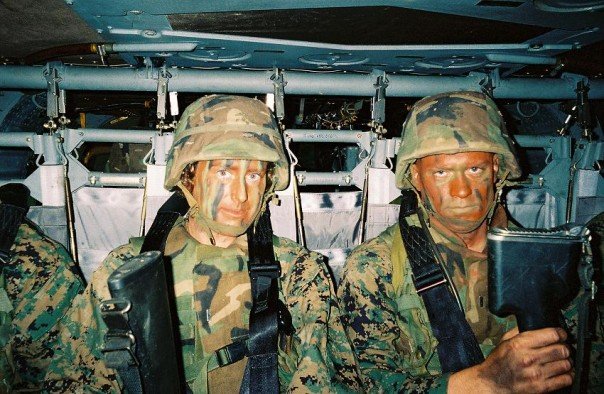By Kyle Beardsley, David E. Cunningham, and Peter B. White
Scholars have demonstrated a number of areas—such as mediation & peacekeeping—where international actors such as the UN contribute to the resolution of violent conflicts. Does the UN also help to prevent conflicts from becoming violent in the first place? In a recent blog post, Andrew Mack addresses “Why the UN Sucks at Conflict Prevention,” describing a number of the challenges facing the UN as it attempts to nurture a “culture of prevention.” In a forthcoming article in the British Journal of Political Science, we find evidence that the UN can act in various ways that make violent conflict less likely, particularly in disputes that are close to other conflicts in which the UN is active.
At first glance, UN efforts at violent conflict prevention do not look promising. Every time a dispute escalates to major armed conflict in the world, the failures of the UN at violent conflict prevention become evident. While we can learn much by studying the cases in which the UN and other actors failed to prevent conflict escalation, we might lose track of the important comparison at the root of the question of UN efficacy in conflict prevention: Are the cases in which the UN does act to prevent conflict less likely to escalate than cases in which the UN does not act? It can be true that the UN leaves much to be desired as a conflict preventer but at the same time also be true that the UN is providing added value when it does devote resources to prevent conflicts.
One of the key hindrances to observing the added value of UN prevention efforts is that failures are easy to observe while it is difficult to distinguish between successful prevention and cases that were never at risk for escalation in the first place. We address this dilemma head-on by examining the effect of UN action in all intra-state disputes over self-determination from 1960 to 2005.
Disputes over self-determination involve state governments and some ethnic group seeking increased control over some territory in the state, which can include greater cultural, economic, or political autonomy up to a demand for secession in order to form an independent state or to unite with another state. Since the 1990s, self-determination disputes have been the most common cause of civil war, yet these disputes can exist independent of and prior to—or after—violent conflict. Accordingly, we treat these disputes as a set of potential civil wars and ask if they are less likely to escalate to civil war after the adoption of UN Security Council (UNSC) resolutions that pertain to them.
Specifically, we examine whether various types of resolutions adopted by the United Nations Security Council (UNSC)—including condemnations, diplomatic measures, and authorizations of sanctions and force—affect the likelihood that these disputes become civil wars. We find that UNSC resolutions can have a substantial preventive effect, through both directly engaging the disputing parties and indirectly shaping their incentives to escalate to violence or remain at (relative) peace.
To examine the direct and indirect effects of UNSC resolutions, we coded original data connecting resolutions to specific self-determination disputes as either directly or indirectly relevant. Directly-relevant resolutions were coded as such because they either explicitly referenced the self-determination group—e.g., “Turkish Cypriots”—or made more oblique references to the group—e.g., the “two communities” in Cyprus—or to their conflict with the state. Indirectly-relevant resolutions were coded based on whether resolutions addressed a broader country- or region-wide conflict to which the self-determination group was a plausible participant, but did not specifically address the self-determination dispute.
We find strong evidence that directly-relevant UNSC resolutions authorizing diplomatic activity—e.g., mediation, shuttle-diplomacy, and “good offices”—reduce the likelihood that a self-determination dispute will escalate to civil war. However, we also find that indirectly-relevant resolutions that authorize the use of force—e.g., creating or expanding a peacekeeper mandate—or sanctions also exert a strong pacifying effect.
Our findings regarding the indirect effect of UNSC resolutions are particularly striking because they suggest that when the UN directs more forceful action—i.e., sanctions or force—to a broader regional or country-wide conflict, it can have a substantial deterrent effect on peripheral disputes. Indeed, we find that, on average, a UNSC resolution regarding the use of force in the prior year reduces the probability of civil war onset to almost zero in indirectly related self-determination disputes—where the probability of civil war onset in the case of no such UNSC resolution is approximately 10%. These effects are particularly unlikely to be driven by the UN directing intervention to “easy” cases.
While the concern that the UNSC may “cherry-pick” easy cases for intervention is a valid one, it is extremely unlikely that this concern would extend to indirectly relevant disputes. If the UNSC were applying sanctions or deploying peacekeepers to countrywide conflicts in anticipation of positive externalities vis-à-vis peripheral self-determination disputes, they would likely indicate this explicitly in the text of the resolution. A “cherry-picking” explanation would contend that the UNSC has an institutional incentive to advertise their (anticipated) success in preventing the peripheral self-determination dispute from escalating to civil war. If they did advertise this intent, however, the resolution would be coded as directly relevant in our data.
The implications of these findings are clear: we cannot judge the efficacy of the UN solely on the basis of direct interventions. Rather, we should take into account the substantial positive externalities that the more forceful interventions can have in the case of indirectly-related disputes that would otherwise be at a much higher risk of escalating to civil war. The UN is certainly not without its flaws in the area of prevention—diplomatic involvement was the only form of direct action to have a relationship with conflict prevention—but by focusing narrowly on the conflicts to which the UN explicitly directs its efforts (or fails to do so), we risk substantially understating its broader usefulness as a preventer of armed conflict.
Kyle Beardsley is Associate Professor of Political Science at Duke University. David E. Cunningham is Associate Professor of Government & Politics at the University of Maryland and a researcher at the Peace Research Institute Oslo. Peter B. White is a PhD candidate in the Department of Government & Politics at the University of Maryland.







5 comments
The UN sucks at fighting. Period. Which in the end, is what is meant be the Orwellian phrase “peacekeeping”
UN peacemaking flourished in the decade following the end of the Cold War, as many longstanding armed conflicts were brought to an end through political negotiated settlements.
UN peacemaking flourished in the decade following the end of the Cold War, as many longstanding armed conflicts were brought to an end through political negotiated settlements.
It is definitely positive that the United Nations’ efforts in mediation and good offices, a well as the passage of resolutions tends to reduce the instance of civil war and other conflict. Mediation is incredibly important in such conflict resolution matters. We can’t focus only on the narrow areas where the UN directs its focus, but we must focus on broader conflict areas. Thank you for the excellent article.